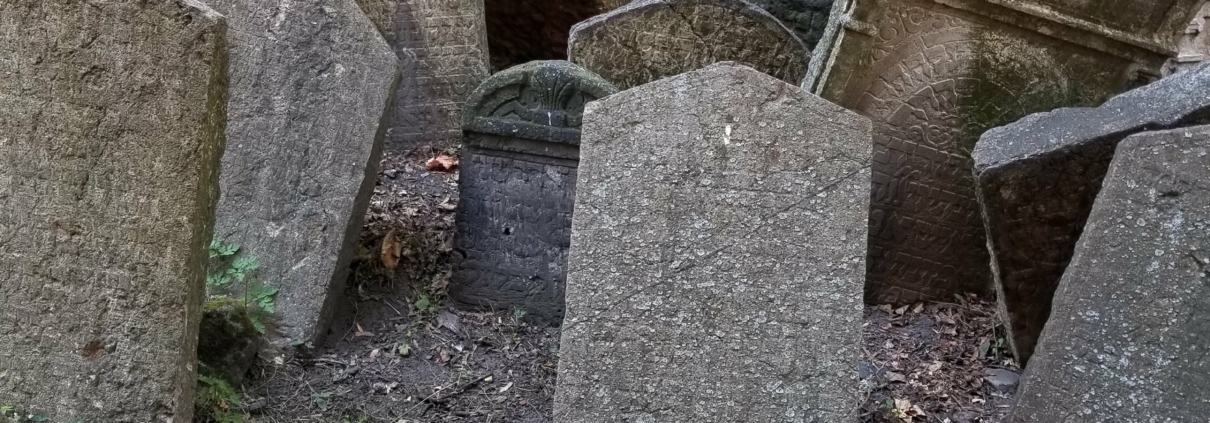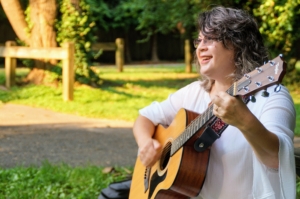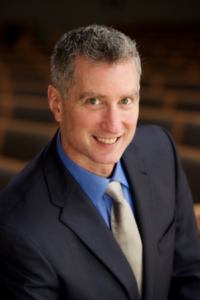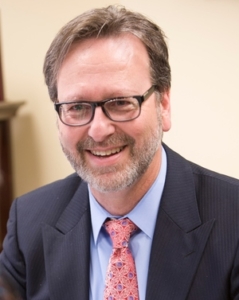Set in Stone: A Yizkor Story
Each year before Rosh Hashanah I visit the relatives in cemeteries in New York. I go with a sense of obligation. I arrive with anticipation that memory will bring a joyful connection. I visit with the hope that they are guiding me and supporting me. For the past fifteen years the experience was much the same. Placing stones, speaking their names, a quiet prayer, standing silent, noticing the weather, and checking it off the list.
I was in New York in early September. Having taken the train to New York, I hadn’t considered how I would make the trip out to Queens. A friend, who is also a Rabbi, came to my assistance and offered to be my driver.
The first cemetery visit is always to my father. He is interred at Mt. Lebanon Cemetery in Queens. Leaving Manhattan at 9 in the morning and heading toward Long Island is a treat – there is nearly no traffic. We turn off Myrtle Avenue into the cemetery, passing the chapel building and maintenance garage on the left. Before us is a long rose granite wall. That’s where dad is, in the wall. In front of the wall are small cement benches. Scattered below the wall are a few pebbles and rocks left in memorial.
Perhaps you didn’t think Jews are interred above ground. Let me explain.
The day of the funeral; it was Sunday, December 14, 2003 and the weather was cold and it was snowing. The forecast was for the snow to intensify with blizzard conditions. The cemetery advised that they would not be able to open a gravesite in the cold, snowy weather. Our alternative was to purchase a vault – a hole in a wall. A granite panel is pried away, the coffin slides in and the panel is reset.
There is a ramp leading from the parking area to the wall. Each time I visit and ascend the ramp I remember that day. When the hearse pulled up the snow was already deep enough to make driving hazardous. The hearse had trouble approaching the ramp and several family friends grabbed shovels and cleared the way.
In the middle of this stressful, sad situation, there was a moment of laughter. You see, my father’s career was spent in the plastics packaging industry. When the rear door to the hearse opened we saw that the coffin was in a huge plastic bag. It seemed that even in death, Dad would be in plastic packaging.
I bring those memories to my annual cemetery visits. Place the stone, say the name, offer a prayer, stand in silence, and notice the weather, . . .
This year was different.
We parked next to the maintenance shed and headed up the ramp. On the cement bench sat an older man, legs crossed, hunched over, arms crossed on his lap. He was folded up onto himself. He wasn’t moving. He wasn’t speaking. He was sitting in vigil.
I thought of how when visiting an art museum, you notice the people standing still, fixed and contemplating each painting. As you move through you might try to get close to the art but not block the view of the people already standing there. You keep your gaze on the art as well and you don’t make eye contact.
We didn’t want to cross between this solitary figure and the grave of whomever he was there to visit. We hesitated. We waited. And then we walked slowly past to the far end of the wall, to the spot that is my father’s resting place.
I placed a stone on the ground. I said his name. We offered the el maleh prayer, singing softly but just loud enough for the other gentleman to hear as well. I noticed the fine weather that day. I was ready to leave. And so we walked toward the car, back down the ramp.
But we didn’t leave. We looked back at this sad figure sitting on the bench. He glanced toward us and then shifting his gaze, he looked to the wall again. We had to return.
William Blake wrote: Can I see another’s woe and not be in sorrow too? Can I see another’s grief, and not seek for kind relief?
Back up the ramp, I slowly approached him. “Sir, I was wondering if we could offer a prayer on your behalf? We are both rabbis.”
“Yes” he replied.
I kneeled down toward the ground. My friend sat on the ground.
“May I ask your name?”
“Marty”
“Marty, Who are you here to visit?”
“My wife”
“Which one is she?”
“Right there – Jill Stone”
I look to the engraved name on the wall and read the dates of birth and death. She had died about two years prior. Marty was sobbing. This man’s grief was unrelenting, unremitting.
“Can you tell us a bit about her?”
“She was wonderful. We were married for 38 years. She was a schoolteacher. We didn’t have children of our own but her students, she loved them like they were her children, they were her children. We were both teachers. She had just retired before she died.”
“Was she ill?”
“No. Or we didn’t know she was ill. She told me she wasn’t feeling well. We didn’t think much of it. And she died, she died in my arms.”
“I’m so sorry.”
“Is there anyone else to whom you are close?”
“I have a younger brother. He calls me every weekend, to make sure that I am alive.”
“You’ve suffered a terrible loss. And you are here for Jill today.”
And then came the response that shook me.
“I’m here every day. I promised her I would come. I’ve been here everyday since she died except for Saturday when the cemetery is closed. I arrive at 7:30 when the gates open and I leave at 4:30 when the gates close.”
So many thoughts came to mind. Judgmental ones – don’t waste your life sitting here. Sympathetic ones – I’ve never before witnessed such grief. Curious ones – I wonder what it is like to love someone so much that I would visit their grave every day, six days a week, all day long.
Now I begin to notice that he is wearing a Ralph Lauren jacket and shirt but they are worn and dirty. His hair hasn’t been cut in a long time. He has neither a water bottle with him, or bag of food.
My rabbi friend and I take the rabbinic approach – “Do you feel that Jill is with you?”
“Oh yes, we talk to each other. Sometimes we argue.”
“Do you feel Jill’s presence when you are not here at the cemetery?”
“Yes, sometimes I do.”
“Jill is with you everywhere, not just here at the cemetery.”
“Yes, I suppose so.”
“Perhaps you could honor Jill by doing something in her memory. Perhaps volunteering, teaching.”
“Yes, I have thought to do that, and I have done a bit of that. Maybe I could do more.”
We offered a prayer of comfort and we sat a while longer.
Finally, with regrets for leaving, we departed. Our friend crossed his legs the opposite way, folded his hands over each other and bowed his head toward his lap.
When we experience the death of a family member or someone we loved, we may be plunged into grief. The experience may be unimaginable and inexpressible. And yet, grieving is a part of the human experience.
Grief should be the way that bereaved people heal. We anticipate that there is always the potential for healing. We believe that we must come to terms with the loss, fashion a new relationship with the person that has died, and learn to live in the world again. Pain dulls with time we are told or at least we form a protective layer around the pain so that we can function again. A new normal emerges. Sometimes, there is personal growth, as the lesson of mourning teaches us how to be more compassionate human beings.
The Jewish tradition offers brilliant wisdom about the process of grieving and remembering. A fast burial, seven days of shiva, a month of Kaddish, a year of mourning. The cycle continues throughout the life of the mourner in Yikor Services and Yahrzeit observances. And our tradition offers limits: The Jewish mourning cycle allows for a phased recovery from loss.
Judaism is a religion focused on the living, not the deceased. We caution the mourner against excessive grief. “Weep not in excess for the dead, neither bemoan her too much,” said Jeremiah (22:10).
Talmud teaches that when a wedding procession and a funeral cortege meet at an intersection the wedding goes before the funeral. A person shouldn’t grieve too much. Living is paramount.
In our Jewish tradition we take a task-oriented approach to grief. The community performs mitzvoth – comforting the mourner. The mourners engage in rituals and prayers to give regularity to their days.
Judaism also places protective fences around grief. We shield the mourner so that they may grieve, weep, rant and rest. But the fences are also designed to protect against excess grief, to keep sadness from drowning us, removing us for engaging in this world. The boundaries around mourning rituals become less and less restrictive over time so mourners can return to their responsibilities, caring for themselves, engaging with others, even repairing the world – all of these are life-affirming.
Jewish law discourages us from visiting cemeteries too often. Mourning more than is required is characterized as a transgression against life! (Isaac Klein).
We come to Yom Kippur anticipating the Yizkor service. For some it is a difficult time of year. Holidays are celebrations, sometimes diminished when those loved ones with whom we have celebrated have died. Even worse may be the memory of those who died around this time of year. And every other family celebration to come, the bar or bat mitzvah, the weddings, the life cycle events – they aren’t there, the people who helped make these times special – not there to celebrate with us. Perhaps no one even mentions his or her name any more. In our tradition there are two deaths – the first is when the body is laid to rest. The second is when no one mentions that persons name any more.
Marty would likely utter Jill’s name with his last breath.
Marty was sitting vigil on a cement bench grieving for his wife Jill Stone. His grief was as tangible as the granite wall in front of him. His grief was so heavy his body was collapsed under the weight.
The psychologist might say that Marty was depressed. The philosopher might say that Marty had given up on life. The theologian might say that Marty had entered the dark night of the soul and had not emerged.
Time had not healed his wounds. Marty would not allow time to heal. He himself was drowning in a river of tears.
In Sefer Moed Katan, a medieval volume, we are advised “when a man indulges in excess grief for his dead, he will soon find himself weeping for another dead.” I suspect that Marty was weeping not just for his beloved Jill but also for himself, for a person that withdraws from the world sitting in the cemetery six days a week is one who is himself acting as if dead.
My experience at the cemetery that day has prompted many questions in my mind. What is our role as members of a wider community? In response to illness and loss, have we met our obligations when we attend a funeral, bring a cake to a shiva house, or say amen to the mourner’s Kaddish? Not just as Jews, but also as fellow human beings, how do we best affirm life in relationship to loss?
Honoring the dead is an expression of community beyond the bonds of personal relationship. You may have heard about what seems to be a new trend, attending the funeral of veterans who have no surviving family.
Joseph Walker, an airman who served from 1964 to 1968, passed away November 19, 2018. No family members to attend his burial could be found. So the cemetery hoped the community might make sure Walker, who was 72 when he died was not buried alone. “If you have the opportunity, please come out and attend,” the cemetery said on its Facebook page. News outlets estimated 5,000 people attended.
This year, the friends of Wayne Wilson of Niles, Michigan put a call out for community members to attend his funeral. They were expecting an additional 10 to 15 people to show up. Instead, about 3,000 people turned out to pay their respects to the Vietnam War veteran, who did not have any surviving family members.
Last week a funeral home in Sarasota Florida invited the public to a veteran’s service because he had no family. Nearly 2,000 people showed up to mourn Edward Pearson.
I spoke with a Rabbi in Sarasota, who was amazed by the turn out and bemused too. Where were all these people when Pearson was ill or dying? Isn’t it more important to attend to the living than to the dead?
I understood that lesson. It was more important to sit and talk to Marty Stone than to stand silently at my father’s crypt and comment on the weather.
We have only so much time and energy. So I would suggest that the most important mitzvah is attending to the living; to bring comfort, relief, and support. And not just to members of your family or even your close circle of friends. We should extend our capacity to help as widely as we can.
I am not here to criticize anyone in this room. In fact, many of you are part of a most extraordinary community of caring. One mention of an illness or a tragedy, and the outpouring of love and support can be astonishing. I tell rabbinic colleagues around the country about this community and they are amazed. We are selfless, devoted, and generous.
So I just want to add one more act of kindness to your list. I suggest one more undertaking. Some of you already do this. Extend yourself to people you don’t even know.
Truth is I nearly left that cemetery without so much as looking at Marty Stone. I was there for my own grieving process. I was imposing on another person to be my driver. I had another cemetery to visit and then it was time to prepare for Shabbat. I was all in my own head with virtuous thoughts, meeting obligations, and checking them off the list. And later I realized that nothing this year might affect me as profoundly as stopping to comfort a stranger in a cemetery.
There were new lessons to learn and old lessons to learn again. The new lesson was to value the people in my life more than ever before – not waiting a minute too long to express my love and demonstrate my caring. I am still struck by how much love Marty felt for his Jill. Sitting on a bench before a granite wall would be too late for me to express love.
The old lesson I needed to learn again is that I must value every person – the strangers, the ones that I have never met could be teachers, or even angels. Perhaps that is why the Torah reminds us 36 times to take care of the stranger. We tend to forget to help those who we don’t yet know. People are not abstractions. They are emotions and intellect, bodies and minds, all deserving of caring and respect.
The Jewish way in death and mourning is to remind us that we must value life – not just our life, not just the lives of those with whom we have a relationship, but also all life. I myself may have trouble living up to this standard I am setting out before you this day. But I see the blessings of caring and compassion. I see the curse of being scorned or alone. And I will forever remember this visit to the cemetery, before these High Holidays.
As we pray this day to God Adonai, El Rachum v’chanun – the God of comfort and grace, may these prayers remind us to bring healing and caring to all those whom we know and those we are yet to meet.
– Evan J. Krame, Rabbi






 Evan J. Krame was ordained as a rabbi by the
Evan J. Krame was ordained as a rabbi by the